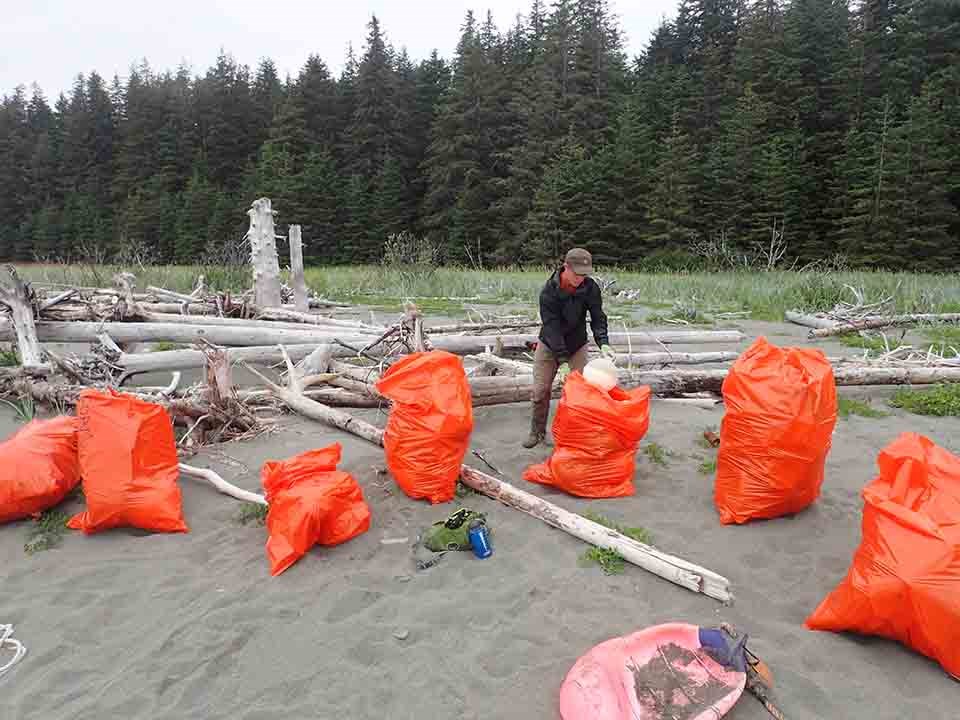
NPS
Marine species can be tangled in plastic debris and suffocate. Ingestion of the plastics may block digestion and interfere with their ability to feed. Plastics remain in the ecosystem for a long time and not only contain chemicals, but also adsorb other contaminants and accumulate them. As different species of fish ingest the plastic, these contaminants accumulate and may enter the human food supply.
Nonnative species can attach to or get tangled in floating debris and be transported to new areas. The polar regions, such as the Arctic, may be especially susceptible to invasion by nonnative species due to a decrease in sea ice, increasing ship traffic, strong storms, and a warming environment.
Microplastics
Microplastics are the small plastic pieces and fibers that result from the breakdown of plastic or are introduced from coastal area sewage and wastewater. Microplastics had not, until recently, been reported in Arctic waters, but recent studies have found an abundance of microplastic particles on the surface and subsurface (including under sea ice). In fact, the amount of microplastics may be higher in the Arctic because they can be trapped under the ice and accumulate there. With so much plastic in the water, it is highly likely that zooplankton and other marine animals may confuse microplastic particles for food, and mistakenly ingest the plastics. More studies are needed in Alaska to determine the scale of the problem here.Source of the Plastics
Where does all this plastic come from? Most plastic found in the ocean is everyday waste: grocery bags, food wrappers, and water bottles. As these plastics “break down” they just become smaller and smaller particles, but each of those fragments still has the same chemical properties as the original plastic—or worse, the particles can adsorb other contaminants found in the water. Even “biodegradable” plastics are a problem, because in order for them to degrade, they need exposure to high temperatures, and the ocean protects them from high heat and UV light.Learn more about marine debris and contaminants
Last updated: February 16, 2018
